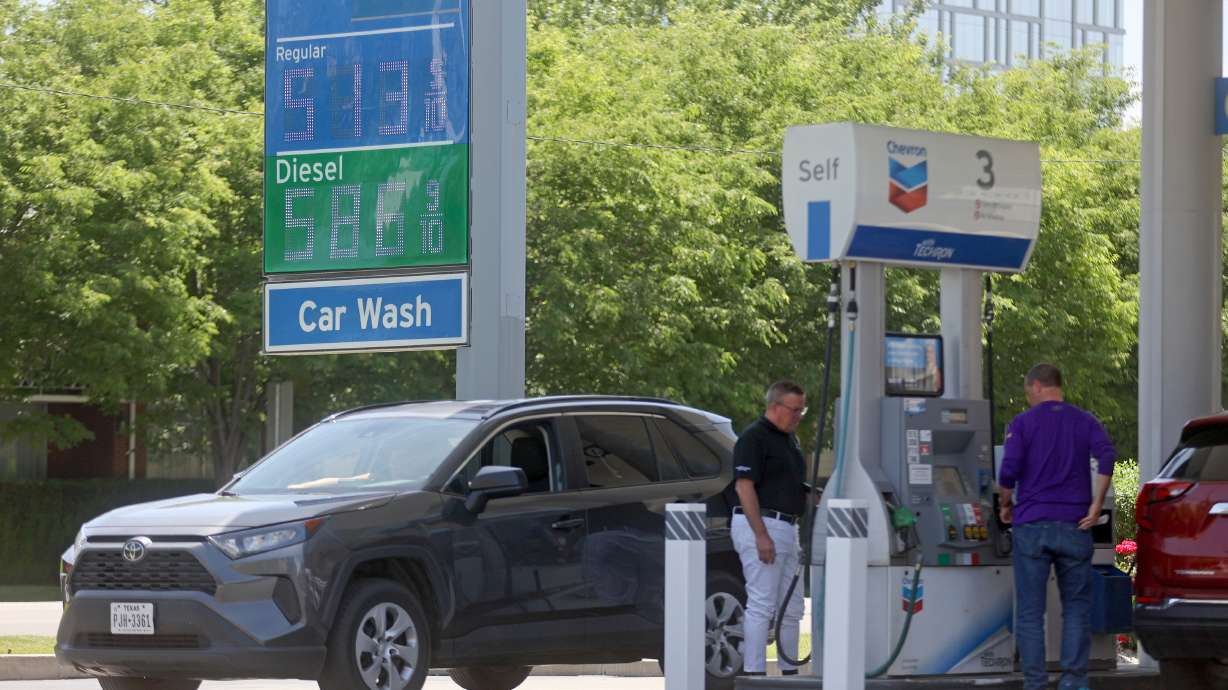Estimated read time: 3-4 minutes
This archived news story is available only for your personal, non-commercial use. Information in the story may be outdated or superseded by additional information. Reading or replaying the story in its archived form does not constitute a republication of the story.
SALT LAKE CITY — The drama over a proposed gas station next to Sugar House Park has now spilled over into a proposed zoning change that could change where new gas stations are built.
The Salt Lake City Council is mulling major new citywide gas station standards after the Salt Lake City Planning Commission gave the proposal a favorable recommendation in April.
Most of the changes revolve around where gas station fuel tanks can be located.
Under the proposed zoning change, new above- or below-ground fuel storage tanks would not be allowed to be constructed within 350 feet of any river, stream, canal, pond or any other existing body of water within Salt Lake City. The same goes for any water resources, as well as any public park or open space that is at least an acre in size.
Above- or below-ground fuel storage tanks would also have to be at least 30 feet away from any property line, while pump islands would have to be at least 25 feet from any property line, under the proposed ordinance.
All new underground fuel storage tanks must also be constructed with noncorrodible material or at least designed to "prevent the release or threatened release of any stored fuel" during its lifespan. Property owners would also be "accountable for any cleanup and remediation of the subject property" should a leak or surface runoff contamination occur, among other rules.
The Salt Lake City Mayor's Office initiated the zoning ordinance amendment, which was sent to every gas station owner in the city near the end of 2023. The process began a few months after an appeals officer upheld the Salt Lake City Planning Commission's decision to reject a proposal to build a gas station on the corner of 2100 South and 1300 East, by the northwest corner of Sugar House Park.
A report from the city outlining concerns over underground storage tank leaks was one of the factors behind the decision to reject a conditional-use permit. The project was eventually scrapped, and the site remains vacant after the abandoned Sizzler restaurant was torn down earlier this year.
However, the proposal has received pushback from some gas station owners. Holly Robb, director of government relations for Maverik, wrote a letter to the city in March calling its proposed storage tank requirements near property lines "impractical, unnecessary and potentially dangerous to customers" because of space needed to monitor leaks.
"If the proposed 30 feet requirement is implemented, the result would be storage tanks placed very close to fueling canopy where there is a lot of vehicle traffic," she wrote, in part. "This is an unnecessary risk."
However, City Council members said Tuesday that they're more concerned about leaks impacting neighboring properties, including open spaces and bodies of water, as they appeared to lean in favor of adopting the change.
Diana Martinez, a senior planner for Salt Lake City, wrote a report last year that noted leaks were found in 54 of the 768 underground storage tanks that the state inspected in 2022. Her finding was used in the city's argument against the Sugar House Park gas station because of its proximity to the retention pond downslope of the lot.
Salt Lake City Councilwoman Sarah Young, who represents Sugar House on the council, said she understands the concern, but she'd "rather be cautious," especially near bodies of water. Salt Lake City Councilman Dan Dugan, on the other hand, said he is alarmed that 7% of tanks had leaks.
"It may be impractical and unnecessary, but I think it is necessary with we're having that many problems with leakage," he said. "In this modern day, and we can't have a storage container that doesn't leak of hazardous material? Seven percent — that's high."
A public hearing on the item is scheduled for Sept. 17, when residents and businesses can weigh in on the proposed ordinance before it is voted on. The City Council could vote on the proposed ordinance change as early as Oct. 1.









